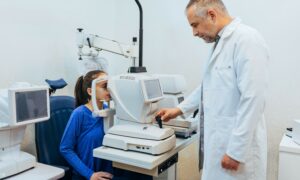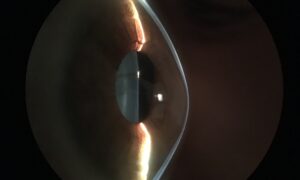June 3, 2024
By Dwight Akerman, OD, MBA, FAAO, FBCLA, FIACLE
Once considered a benign refractive condition easily corrected with single-vision spectacles or contact lenses, juvenile-onset myopia is now one of the fastest-growing sub-specialties in eye care. More and more primary care optometric practices have decided to offer myopia management to address the juvenile-onset myopia pandemic. With around 50% of children and adolescents in the United States having myopia, the demand for myopia-related care is growing exponentially.
To better understand the current state of the myopia management market in the U.S., Jobson Optical Research recently conducted a survey among U.S. eye care professionals focusing on myopia management in children and adolescents. The survey included 461 qualified respondents who are optometrists or ophthalmologists practicing in the United States and seeing patients aged 18 and under. This is the largest ECP survey on myopia management ever conducted by Jobson Optical Research. The survey highlights a significant untapped potential market for myopia management, with an average of nearly 24% of the patients of the respondents being aged 18 and under, an estimated 51% of them being myopic. Unfortunately, only 64% of the respondents provide treatment therapy for myopia progression control, despite 51% of their patients aged 18 and younger being myopic. The most common reasons for not providing myopia therapy include “not enough patient demand” and “too time-consuming.”
Moreover, according to a 2022 survey conducted by the American Optometric Association (AOA) Research & Information Committee (RIC), 69% of AOA-member optometrists surveyed provide myopia management services to children and adolescents.
These surveys support an uncomfortable truth: due to perceived barriers, not every optometrist offers myopia management (and some undoubtedly never will.) Optometrists who are reluctant to prescribe myopia therapies should refer pre-myopic and myopic children to qualified colleagues for management. Just as many optometrists do not treat glaucoma but instead refer to a qualified colleague, referral of pre-myopic and myopic children is entirely acceptable.
Eye care professionals reluctant to incorporate myopia management into their practices often cite the following perceived barriers, all of which are surmountable:
- Barrier: Discomfort with examining and treating children.
- Solution: Pediatric care requires clinical and communication skills that must be practiced and honed. If you are unwilling to change and learn how to examine and manage children efficiently, hiring a recent graduate with pediatric training is an excellent solution.
- Barrier: Skepticism about the effectiveness of myopia control interventions.
- Solution: Education is vital, and many ECPs are not up to date on the latest evidence-based research. The truth is that dual-focus and extended depth of focus soft contact lenses, orthokeratology, topical low-dose atropine, and next-generation myopia control spectacles have been shown to be safe and effective in randomized, controlled clinical trials.
- Barrier: Children take too much chair time.
- Solution: Myopic children, at least initially, require more chair time than an adult comprehensive exam. Efficient scheduling, trained staff, and appropriate professional fees that consider the necessary skills and chair time to provide quality pediatric care are mandatory to ensure myopia management is financially feasible.
- Barrier: Intimidated by prescribing off-label treatments to children.
- Solution: Off-label prescribing, supported by peer-reviewed literature, is acceptable for an individual patient and within the scope of licensure. The FDA does not regulate the practice of optometry or medicine.
- Barrier: Fear that optical revenue will decrease.
- Solution: The largest source of revenue for most primary care optometric practices is optical. With efficient scheduling, staff training, and appropriate fee schedules, myopia management can increase practice revenue without affecting optical revenue.
Myopia is the most significant threat to eye health in the 21st century. While the eye health benefits of lowering a child’s ultimate level of myopia are profound, the practice and financial benefits of providing myopia management are also significant. I urge you to commit to the highest level of care and prescribe the most appropriate evidence-based interventions to children at risk of progressive myopia or refer them to a qualified colleague.
Best professional regards,
Dwight H. Akerman, OD, MBA, FAAO, FBCLA, FIACLE
Chief Medical Editor
dwight.akerman@gmail.com














